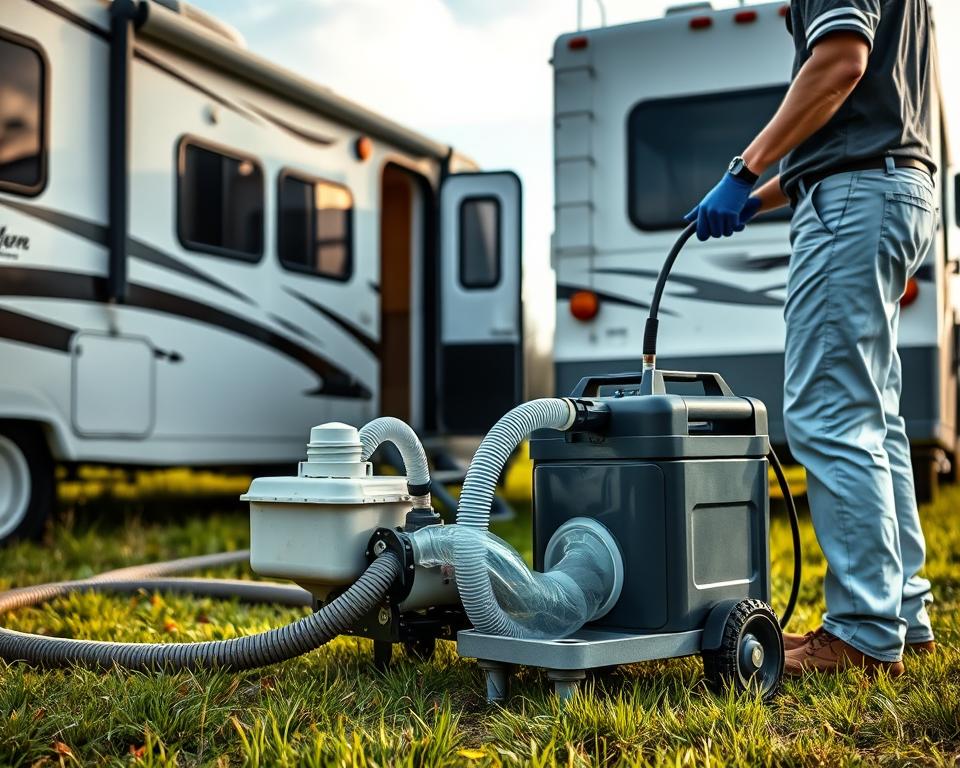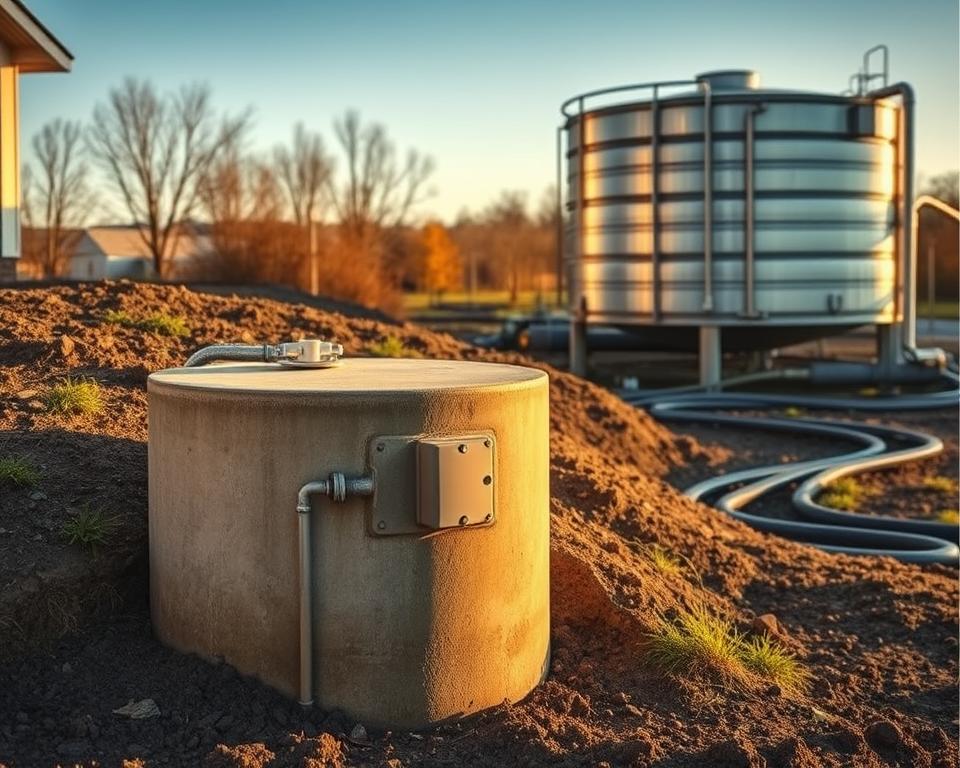Behind the Scenes of Rosamond RV Waste Pumping Service Operations
RV Sewage Tank Pumping: Key Upkeep Guidelines
Consider the consequences of neglecting your RV’s septic system. Numerous campers feel intimidated by tank draining. However, understanding these upkeep steps is essential. These steps preserve your camping joy and avoid expensive repairs. Learning proper waste disposal is key to your septic health. Here are key pointers on RV septic pumping with upkeep advice to ensure your system operates flawlessly.
Understanding Your RV Septic System
Every recreational vehicle features a septic setup. It consists of a black tank for toilet use, a gray tank for sinks/showers, plus a freshwater reservoir. Grasping how each part works is key to proper black tank servicing and overall system care.
A series of drain lines and vent pipes balance waste flow and airflow. Understanding this synergy helps you avoid blockages and buildup. This knowledge ensures hassle-free trips and reliable waste handling.
Regular checks and care keep your tanks in top shape. Monitoring fill levels and dumping when needed keeps odors at bay. By maintaining your RV’s septic system properly, you’ll improve its lifespan and enjoy every trip more.
The Value of Consistent Septic Maintenance
Frequent tank pumping keeps your system working and clean. Leftover solids lead to smells and clogs, spoiling your trip. A full tank can produce embarrassing backups. Such mishaps kill the fun on the road.
Skipping pump-outs leads to pricey repairs. Damage from neglect can shorten component lifespan. Timely emptying keeps your plumbing running smoothly. It prevents unwelcome surprises and roadside emergencies.
Proactive servicing stops clogs. Dedicating effort to pumping reflects good RV stewardship. It greatly improves your travel experience. By sticking to a dump schedule, you’ll relish the outdoors worry-free.
Recommended Pump-Out Intervals
Determining dump intervals needs careful thought. Generally, dump every 3–5 days when in use. Still, it varies with tank size and occupancy. Pinpointing the correct dump time is key for effective wastewater management.
Empty once the black tank reaches roughly 66% full. This prevents solids from clogging and keeps flow steady. Skipping this leads to blockages and smells that spoil the trip.
Many elements can affect how often you pump:
- Number of people on board
- Length of stay
- Type of waste generated
- Tank capacity
Planning is key to avoiding emergencies. Remember portable toilet service schedules. Knowing your patterns predicts when to dump.
| Usage Scenario | Pumping Frequency |
|---|---|
| Weekend Getaway (2 people) | Every 3–4 days |
| Long Stay, Four to Six Occupants | Every 2–3 days |
| Seasonal Living (2–4 people) | Weekly or Bi-Weekly |
Keep a close eye on tank levels and your habits. Staying attentive guarantees a pleasant trip.

Proper Tank Dumping Techniques
Proper methods stop odors, clogs, and expensive repairs. Always empty the black tank first to protect the gray tank. It keeps gray water from mixing with solids.
Using a high-quality hose minimizes leaks and ensures smooth dumping. Tighten connections to stop spills. After emptying, flush the black tank with plenty of water. This removes residue and preps the tank for next time.
Scout dump spots along your route. Being prepared saves time on the road.
To summarize, use these steps:
- Empty the black water tank first.
- Use a top-quality sewer hose.
- Flush the black tank thoroughly after emptying.
- Plan your dump station locations.
Following these guidelines simplifies black tank maintenance.
Proper Use and Maintenance of Your RV Tanks
Grasping correct handling of black and gray tanks ensures system health. Maintain a bit of water in the black tank to aid waste decomposition.
Refrain from disposing non-biodegradable items. Always use RV-safe toilet paper to prevent clogs. Inspect tanks often to catch problems early.
Occasional treatments boost system performance. These products balance enzymes and bacteria for efficient decomposition. Such measures keep your tanks operating at their best.
- Check for leaks and damage often.
- Apply RV-specific chemical treatments.
- Keep vents clear to avoid odors.
Following these rules protects your septic setup. It also boosts your camping enjoyment.
RV Septic Tank Pumping: Key Tips for Success
To pump your tank effectively, follow a methodical approach. Proper disposal prevents issues—only dump at approved stations. Understanding volume limits prevents spills on the go.
Monitoring levels guides your dump schedule. This extends tank life and enhances trip comfort. A planned maintenance routine keeps everything running smoothly.
Flush well after every emptying. This clears residue for more efficient future pump-outs. By applying these strategies, you’ll maintain your RV’s condition and comfort.
Typical RV Septic Pitfalls
Upkeep prevents trip interruptions. Insufficient flushing causes solids to accumulate. Proper flushing dissolves waste better.
Flushing inappropriate items blocks pipes. Only biodegradable RV-safe items belong in the black tank. Such mistakes can damage plumbing and inflate repair bills.
Keep the black tank valve closed until ready to dump. Open valves let water out but hold solids, causing residue. Only open when ready to empty for a complete clean.
Knowing these pitfalls helps maintain efficiency. Avoiding them keeps your waste management reliable.
When to Seek Professional Septic Services
Recognizing the need for expert help extends tank life. Persistent odors often indicate complex issues. Tanks that empty sluggishly hint at internal blockages.
Visible residue at dump points requires attention. Such situations usually need high-pressure cleaning. Experts use specialized tools to clear stubborn clogs.
Regular expert check-ups safeguard tank health. Acting on findings quickly prevents bigger problems. Professional service ensures proper functionality.
Ongoing Septic Care Tips
Smart upkeep ensures lasting system performance. Regular pumping boosts system life and function. Routine rinses clear residue and stave off expensive breakdowns.
Implementing clean cycles safeguards tank health. Inspecting connections stops leaks before they spread. Choosing eco-friendly treatments avoids damage.
Consider these long-term practices:
- Stick to a pump-out timetable.
- Rinse often to remove solids.
- Sanitize twice a year.
- Inspect parts frequently for wear and tear.
Investing in prevention brings peace of mind. Through consistent upkeep, you’ll enjoy travel free from waste worries.
In Summary
Good septic care ensures enjoyable trips. Understanding operation and following guidelines prevents headaches. Regular black tank maintenance improves efficiency. It enhances every mile.
Consistent inspections and care deliver trouble-free trips. This reliability supports every outing. These routines prime your rig for future rides. So you can focus on making memories, not dealing with tanks.


